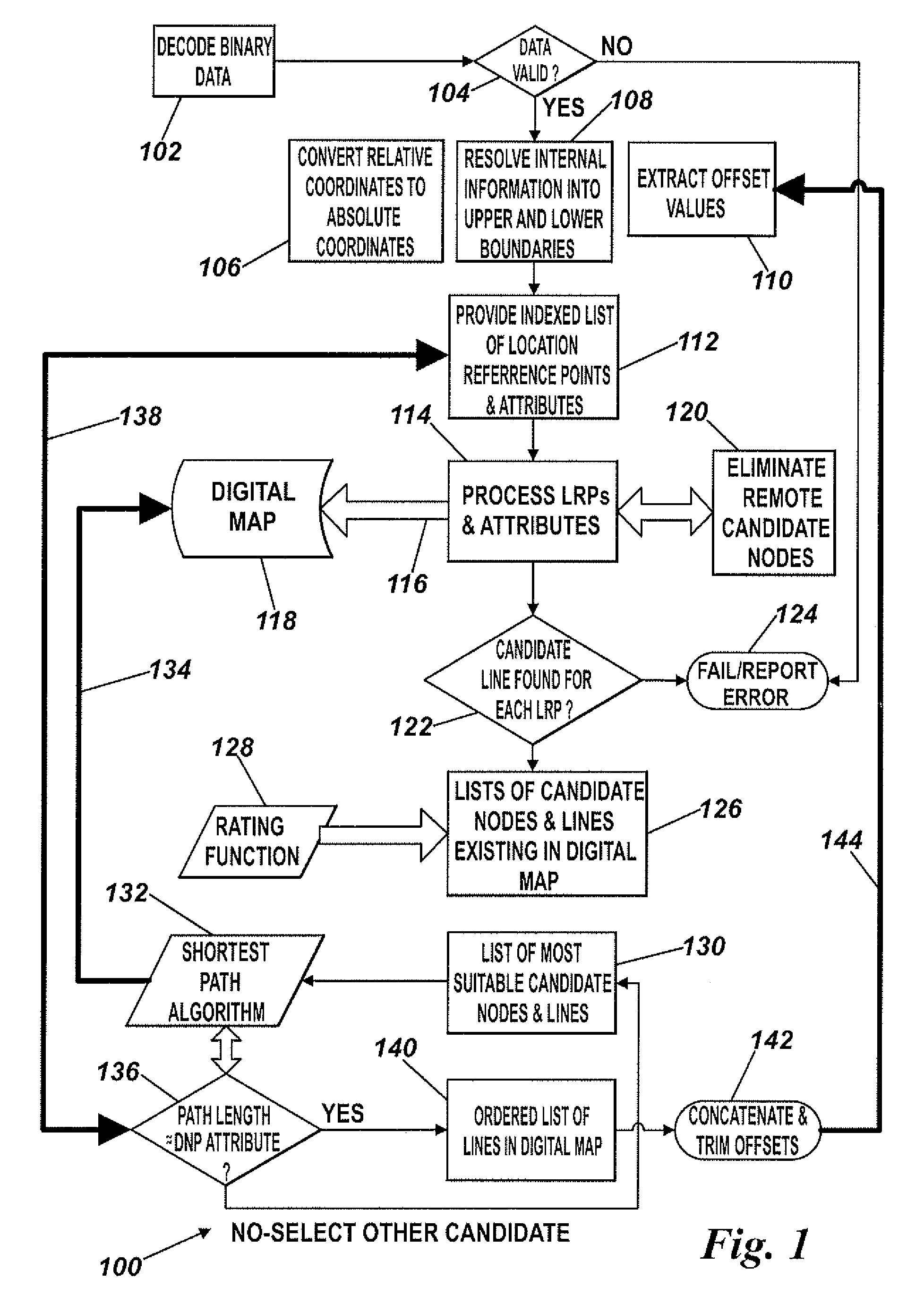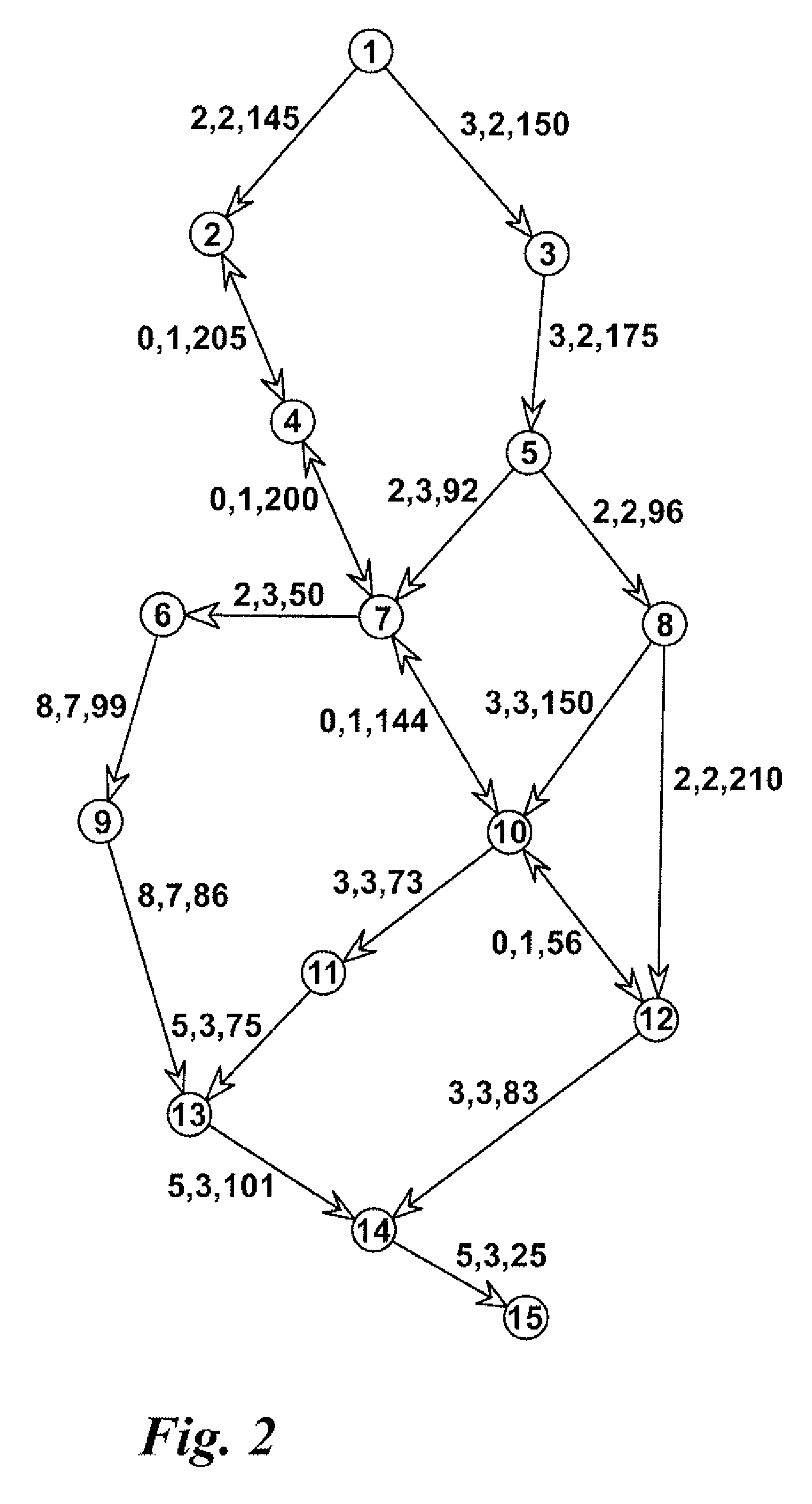Method of Resolving a Location From Data Representative Thereof
- Summary
- Abstract
- Description
- Claims
- Application Information
AI Technical Summary
Benefits of technology
Problems solved by technology
Method used
Image
Examples
Embodiment Construction
[0139]The following description of the invention is provided in terms of segments, but it is to be understood that the method can be applied equally to lines, or to combinations of lines and segments which together are representative of a continuous path through a road network.
[0140]It is useful in the context of the present invention to firstly provide a brief description of the manner in which a location reference is encoded, and the particular logical and physical data formats used in the encoding process. The latter are provided as an Appendix to this specification, and reference to this Appendix is to be had throughout the following description.
[0141]Referring firstly to FIGS. 2-5, a first (encoder) digital map is shown in FIG. 2 and consists of 15 nodes and 23 lines (two-way lines are counted twice). The nodes are numbered from 1 to 15. The necessary line attributes are shown beside every line using the format: , , . FRC is an abbreviation for “Functional Road Class” and FOW i...
PUM
 Login to View More
Login to View More Abstract
Description
Claims
Application Information
 Login to View More
Login to View More - R&D
- Intellectual Property
- Life Sciences
- Materials
- Tech Scout
- Unparalleled Data Quality
- Higher Quality Content
- 60% Fewer Hallucinations
Browse by: Latest US Patents, China's latest patents, Technical Efficacy Thesaurus, Application Domain, Technology Topic, Popular Technical Reports.
© 2025 PatSnap. All rights reserved.Legal|Privacy policy|Modern Slavery Act Transparency Statement|Sitemap|About US| Contact US: help@patsnap.com



